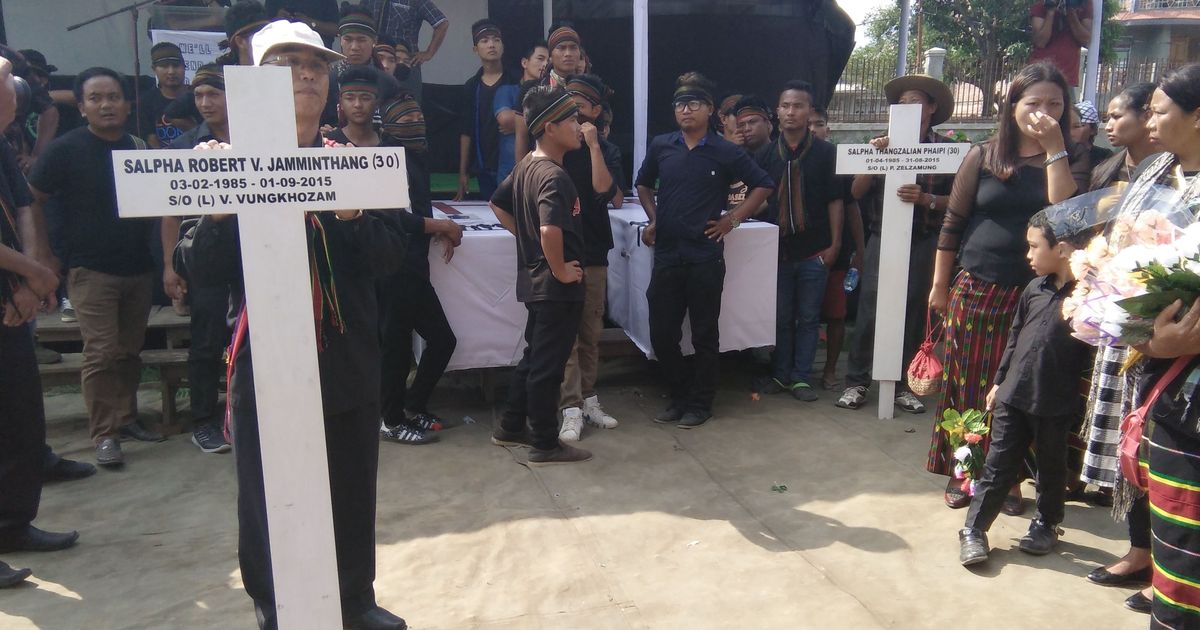

On Wednesday, eight men were laid to rest in Churachandpur district in Manipur – 632 day after they had died. For close to two years, they had been kept in the morgue at the district hospital in Churachandpur town, located on the edge of the Imphal Valley, with hills rising behind it.
Their story goes back to August 31, 2015, when the Congress state government led by Okram Ibobi Singh pushed through three bills that would come to be known as the “anti-tribal bills”. They imposed restrictions akin to an inner line permit system over all of Manipur, both the hills and the plains, making it difficult for outsiders to buy land, settle down or start businesses there. (Inner line permits are official documents that Indian citizens must obtain to enter areas deemed protected.)
Within hours of the bills being passed, the hills erupted in protest, fearing the special protections they enjoyed would be diluted. Churachandpur town became the epicentre of these protests and in the violence that followed, nine persons – some of them teenagers – were killed in police firing.
On September 2 that year, a Joint Action Committee comprising various citizen groups was formed to coordinate the agitation against the bills. As a mark of protest, the town refused to bury its dead. After some months had passed, the family of one of the victims claimed his body and conducted his funeral.
The rest of the burials have taken place only after the new Bharatiya Janata Party government headed by N Biren Singh, which came to power in the state in March, made overtures to the town’s people through the local legislator, V Hangkhanlian. Talks were held. Finally, the government and the Joint Action Committee reached an agreement and a memorandum of understanding was signed on May 10.
It promised compensation for the families of the victims. The state government also agreed to take on board the sentiments of “indigenous tribal people” before it moved forward with the three bills, currently in deep freeze.
Acting on the agreement reached with the Manipur government, the Joint Action Committee buried the eight individuals on Wednesday. The programme started with family members and civil society leaders taking the bodies to the public grounds near the hospital, where tributes were paid and a gun salute performed. After that, a convoy of trucks bearing the eight coffins made its way to the Khuga dam, 8 km away. They were buried in a helipad there.
“I am happy but the memory of my son will never fade away,” said Nuniang, whose 30-year-old son was among those laid to rest.





Kaimuanthang Mangte, a journalist based in Churachandpur, writes for The People’s Chronicle in Manipur.
All photographs courtesy Kaimuanthang Mangte.
[“Source-ndtv”]

